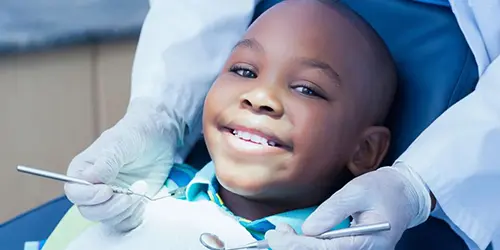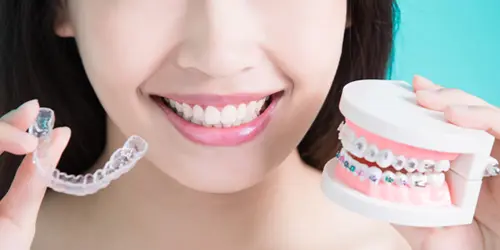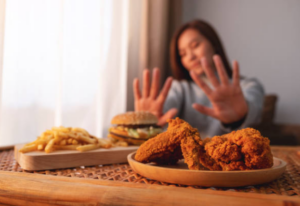Tooth extraction can throw off a child’s routine, especially when it comes to meals. Some foods feel too rough, while others can cause pain or delay healing. Parents need clear answers about what to eat after tooth extraction to help their child recover without added stress. Picking the right meals during this time can prevent problems and support a faster, smoother healing process.
Why Food Matters After Extraction
Right after a tooth is removed, the gum tissue becomes sensitive. A blood clot forms to protect the socket. Eating the wrong food can dislodge the clot or irritate the wound. This may cause dry socket, infection, or delayed healing. The first few days after the procedure are critical, so choosing soft, cool, and smooth food is important.
First 24 Hours: Go Soft and Cold
During the first day, focus on food that does not require chewing. Avoid anything that is too hot or textured. Stick to items that glide over the gums and do not stick.
Best Choices:
-
Yogurt – Plain or lightly flavored. Avoid those with fruit chunks or granola.
-
Applesauce – Mild, smooth, and easy to swallow.
-
Mashed Potatoes – Make them creamy, not lumpy. Let them cool a bit before serving.
-
Smoothies – Use fruits like bananas or mangoes. No seeds. Avoid straws.
-
Ice Cream or Sorbet – A cold treat can help soothe the area. Skip toppings.
Day 2 to 3: Slowly Add Texture
If your child feels better after a day, you can begin to introduce soft solids. Still avoid chewing near the extraction site.
Safe Food Options:
-
Scrambled Eggs – Soft and full of protein.
-
Soft Pasta – Overcooked noodles are easier to chew.
-
Oatmeal – Warm, not hot. Add mashed bananas for extra nutrition.
-
Soft Rice – Stick to white rice and serve with well-cooked vegetables.
-
Cottage Cheese or Soft Tofu – Gentle on the gums and high in nutrients.
Foods to Avoid
To promote proper healing and minimize pain, certain foods should be off the table for at least a week.
Avoid the Following:
-
Crunchy snacks like chips, nuts, or popcorn
-
Spicy or salty dishes
-
Citrus fruits or juices
-
Hot soups or drinks
-
Chewy or sticky candy
-
Anything that requires a straw
Straws create suction, which can pull the clot from the socket. That leads to dry socket, a painful condition that needs dental attention.
Hydration Tips
Keeping your child hydrated helps maintain oral health and prevents dryness in the mouth. Offer water in a cup. Avoid sugary drinks, soda, or anything acidic.
How to Feed a Child After Extraction
Eating might feel strange to your child after an extraction. Here are some tips to make feeding easier.
Small Spoon
Use a small spoon to control how much food enters the mouth. This helps prevent food from touching the extraction site.
One Side Chewing
Encourage your child to chew on the side opposite the extraction. This avoids pressure on the wound.
Soft Textures
Even after a few days, continue to avoid tough meats or raw vegetables. Stick to foods that need little chewing.
Rinse Gently
Use saltwater rinses after meals once your dentist approves it. This helps remove leftover bits without brushing the wound.
When to Call the Dentist
Healing should progress smoothly, but keep an eye out for these warning signs:
-
Bleeding that lasts longer than one day
-
Pain that gets worse after the third day
-
Bad breath or a sour taste
-
Pus or swelling in the area
-
Fever
If you notice any of these signs, contact your pediatric dentist immediately.
What We Do at PCO Pediatric Dentistry & Orthodontics
We focus on stress-free, compassionate care for children. Our services include preventive care, fillings, sedation dentistry, and extractions. After every procedure, we guide parents through home care—including meal suggestions and activity limits. Dr. Sara Rasamimari, our board-certified pediatric dentist, creates a supportive environment to help your child feel safe during every visit.
PCO Pediatric Dentistry & Orthodontics serves families across Queens, NY. We are proud to be a trusted dental partner for growing smiles.
Caring Beyond the Chair: FAQs for a Smooth Recovery
We know that many parents have questions after their child’s dental procedure—especially when it comes to healing at home. Below are answers to some of the most common post-op concerns we hear from families. If you still have questions, don’t hesitate to call us!
Can my child return to school the day after a tooth extraction?
It depends on how your child feels. Some children bounce back quickly and can return to school the next day, especially if the extraction was simple. Others may need a day or two of rest at home, especially if they experience swelling, discomfort, or drowsiness after sedation. It’s best to plan for a light schedule and adjust based on your child’s recovery.
How do I manage my child’s pain without using prescription medication?
Over-the-counter pain relievers like acetaminophen or ibuprofen are often enough for mild discomfort. Always follow your dentist’s instructions for dosage and frequency. Cold compresses can also help reduce swelling and provide relief. Avoid giving aspirin to children unless your dentist specifically recommends it.
What should I do if my child refuses to eat after the procedure?
Some children lose their appetite due to numbness, discomfort, or anxiety. Offer cool, soft foods in small amounts and avoid pushing large meals. Let your child take their time. Keep them hydrated and try offering liquids with more calories, like smoothies or drinkable yogurt. If your child refuses to eat for more than 24 hours, contact your dentist for advice.
Is it safe for my child to use a pacifier after a tooth extraction?
No, it’s best to avoid pacifiers for at least a few days. Sucking on a pacifier can create pressure in the mouth that may dislodge the blood clot, leading to dry socket. Wait until your dentist gives the go-ahead before allowing any sucking habits to resume.
How long should I wait before letting my child brush near the extraction site?
Your child should avoid brushing the extraction site for the first 24 hours. After that, they can begin brushing gently around the area but should still avoid direct contact for several days. Use a soft-bristled toothbrush and skip mouthwash unless your dentist recommends a specific rinse. Saltwater rinses can be a safer option after the first day.




